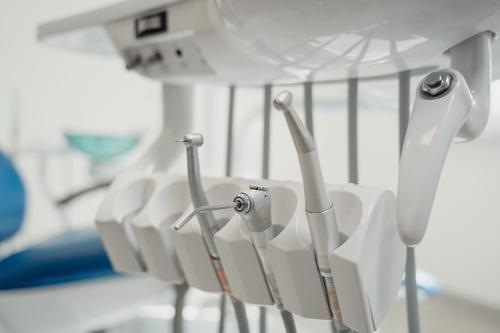
Investing early in good dental care for children is an important part of lifelong oral health. In recognition of National Children’s Dental Health Month in February, Elise Sarvas, DDS, MSD, MPH, clinical associate professor of pediatric dentistry, answers common questions on children’s dental health.
What should parents look out for when it comes to their children’s oral health?
Dr. Sarvas: Make sure they’re choosing healthy snacks and getting adequate fluoride. Kids need a lot of water for hydration as well as to make their teeth stronger. The American Academy of Pediatrics recommends that kids shouldn’t drink more than 4 oz. of juice per day, and the average juice box is 6 oz. Choosing water and snacks that do not contain simple carbohydrates will help. Good options include fresh fruits and vegetables, deli meat and cheeses. Also, foster a good relationship between your kids and the dentist: if we get kids in early, we can have fun, and they’ll see us as part of the healthcare team rather than a stranger they come to when they’re in pain.
How can I help my child practice and maintain good oral health habits?
Dr. Sarvas: Brushing your teeth can be hard! There are a lot of nooks and crannies, so we recommend adult supervision. I used to say that children need supervision “until they can write their name in cursive,” but now that kids don’t get taught that anymore, I say until they can tie their shoes on their own, which demonstrates good motor control. We all look forward to the independence that comes with growing—it’s great for kids to start brushing on their own, but always have a parent go back and check for any missed spots.
I sometimes give parents the Oreo test: if the child eats an Oreo and brushes their teeth and the parent can still see the Oreos, they need to be checking and helping them brush.
How often should children brush their teeth, and with what kind of toothbrush?
Dr. Sarvas: I get this question from parents a lot, and I say: whatever kind of toothbrush they will actually brush their teeth with. But, softer is better! Soft bristles conform more easily to the many grooves in teeth and prevent the gums from wearing away. Not all children like the feeling of an electric toothbrush, so I would only recommend it if you’re certain your child will tolerate it. What’s most important is to brush your child’s teeth at least twice per day with toothpaste that contains fluoride. There are many different flavors on the market now, so find one that your child likes best.
When should you first bring your child to the dentist?
Dr. Sarvas: We recommend bringing a child to the dentist at their dental “age one”: first tooth or first birthday. This allows us ample time to counsel the family, check on growth and development and provide general education. You also want to establish a dental home for kids so if there are concerns later on, families know where to go outside of the emergency department—which can’t always help, and may be very costly.
How does your work create greater public awareness about children’s dental health?
Dr. Sarvas: Optimal oral health is foundational to creating good systemic health. The mouth is an integral part of the body. For children, having good oral health lays the groundwork for many important milestones: getting adequate nutrition to grow healthy bodies, having teeth to learn how to pronounce syllables correctly, holding space for the developing jaws and establishing self-esteem at a critical period of self-development. Helping families and policy makers understand that they’re not just baby teeth that fall out is an important aspect of my job. We need to adequately fund oral health care for children, because they can’t make their own decisions or purchase their own plans. The oral care they receive at this critical stage will have lifelong impacts.
Dr. Elise Watson Sarvas is a clinical associate professor in the Division of Pediatric Dentistry. She currently serves as the pre-doctoral program director and teaches predoctoral dental students, dental therapy students, dental hygiene students and pediatric dental residents at the University of Minnesota.
-30-
About “Talking...with U of M”
“Talking...with U of M” is a resource whereby University of Minnesota faculty answer questions on current and other topics of general interest. Feel free to republish this content. If you would like to schedule an interview with the faculty member or have topics you’d like the University of Minnesota to explore for future “Talking...with U of M,” please contact University of Minnesota Public Relations at [email protected].
About the School of Dentistry
The University of Minnesota School of Dentistry advances health through scientific discovery, innovative education and the highest-quality care for all communities. As the state's only dental school, the School of Dentistry educates the next generation of oral health professionals and is a resource to five states for dental education and consultation. Of Minnesota’s practicing dentists, 72 percent are graduates of the dental school. Through its clinics, the School of Dentistry also sees more than 156,000 patient visits each year.
- Categories:
- Health
- Human development
- Medical




